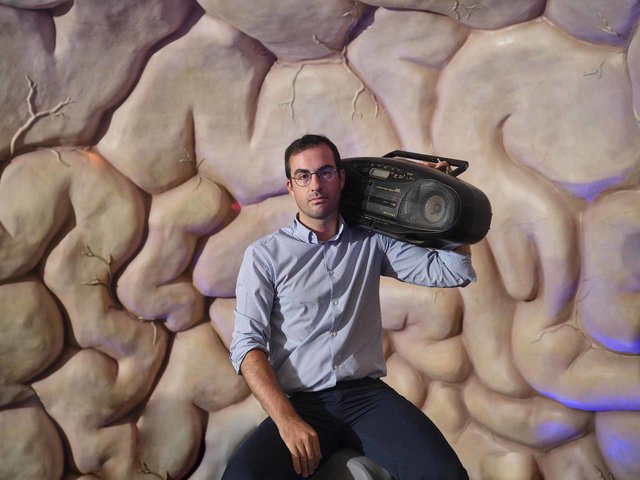Stimulate and read
Focused ultrasound is only part of the solution. “We also need to be able to reliably measure brain signals that indicate different states of depression,” says Costa. “We use this to determine if we should focus the beam on one point where it will have a positive effect, or if we should focus it on a different point. This allows us to adapt the treatment to the individual patient “.
Researchers measure brain activity using the EEG and try to recognize the patterns it contains. Both technologies – for reading and stimulation – integrate them into a single device that will be positioned under the skull, but always above the outer protective layer of the brain (the dura). A second device, on top of the skull, acts as a wireless transmitter.
–
Essential collaboration
There are still many hurdles to overcome before this can lead to a technological breakthrough in personalized depression treatment. The challenges here are both technical (such as miniaturization, battery, data compression) and medical (what is target brain activity and tissue compatibility?). The UPSIDE consortium is therefore made up of many different disciplines: from bioelectronics to neurosurgery, and from brain-machine interfaces to psychiatry.
Costa’s role in this is to develop the best possible chips for treating depression. On the one hand, his multidisciplinary focus of him means that he has less time to research pure microelectronics. But he also realizes that this allows him to conceptualize larger systems and that creativity flourishes precisely where different disciplines converge.
–
Electroceuticals
Neurons are the basic building blocks of the brain and nervous system. They communicate through bioelectricity. They control movements and regulate breathing and all kinds of biological processes. Electroceutics are portable, implantable, and injectable biomedical devices that interact with the nerves of the human body, either by electricity or otherwise. It is a new class of therapies that have the potential to treat certain diseases in a highly targeted, reversible and permanent way. It has already been successful in some neurological disorders and autoimmune diseases.
–
(Much) more than depression
The chip may be able to cure more than just depression. “It’s like a screwdriver and could potentially be useful in treating many different brain diseases,” Costa says. He is also developing chips with which they want to find out exactly how ultrasound activates neurons at the cellular level. Together with colleagues from his research group, he plans to set up a small bio-measurement laboratory where they want to test both types of chips on living tissue, such as cells and brain slices.
His ultimate dream is to contribute to a comprehensive institute, with electrical engineers, natural scientists, mechanical engineers, even aerospace engineers, as well as biologists, neuroscientists, and you name it. Costa: “he will have separate laboratories, but only a canteen and a room with coffee machines. You put different disciplines together for a long time and beautiful things come out ”. It is his way of making the most of the fertile ground at the interfaces between disciplines and of continuing to broaden his horizons.
–


